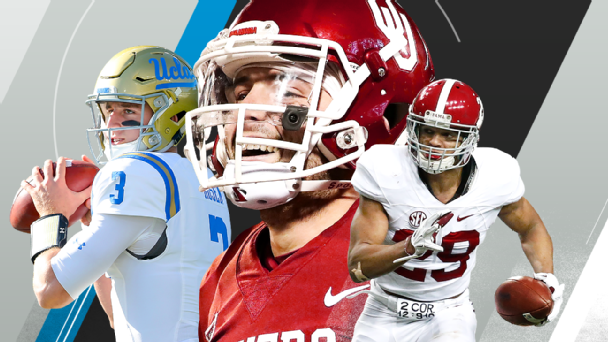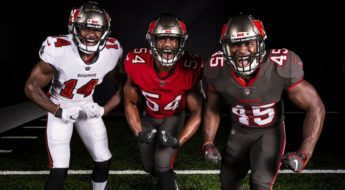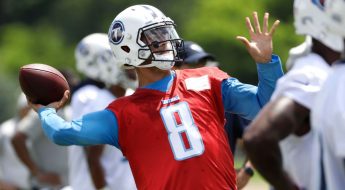Combine workouts are no joke, especially for a 39-year-old Giants reporter

MANALAPAN, N.J. — With the 2017 NFL season officially over, our attention shifted last week to other things, including the draft. Except with the New York Giants’ season a train wreck and long over, I did that weeks ago.
I’m not alone. NFL combine prep has been going on for weeks, months even. College players are scattered at facilities across the country, training for the draft. This year, I decided to join them.
It is more than football. With the process comes the calisthenics and track-and-field portion of the proceedings. Yes, they train and run drills they likely will never have to do again after this is over.
The people at Parabolic Performance & Rehabilitation were nice enough to let me join their group of NFL prospects in New Jersey. Whenever possible for several months — remember, I still have a job as the Giants reporter that involves, you know, work — they’re allowing me to train alongside players from schools that range from Pittsburgh and Syracuse to Monmouth and Youngstown State to Wyoming, Wagner and Southern Connecticut on a regular basis. Performance coaches Justin Moore and Kris Enslen have welcomed me into the group with open arms, even if my body has sometimes rejected the invitation.
It’s carte blanche access. I’m experiencing everything as one of the players, whether it’s on-field or weight room training, classroom work, nutrition and even yoga. When all is said and done, we’re going to see just how beneficial these combine/pro day preparatory programs (which traditionally last six weeks or more depending on the individual) can be, even for a middle-aged graybeard.
Baseline testing has already been done. (Hint: Not good.) We’re in the process of setting up my own personal combine/pro day some time next month.
The drills being tested are the 40-yard dash, vertical jump, three-cone drill (or L drill) and shuttle (5-10-5). The goal is to see how much improvement can be made by a near-40-year-old average Joe, non-professional athlete partaking in the intense program.
A recap of the first three weeks:
-
Baseline testing: Let’s just say I’m slower and fatter and don’t jump nearly as high as my ego or brain anticipated. Heading into the initial testing, the thinking was about 5.80 seconds in the 40-yard dash and 30 inches in the vertical. The logic was that once upon a time there was a relatively decent athlete inside this 5-foot-11, 190-pound frame who was somewhat normal-human fast (remember, these guys you see on TV are mutants, the 1 percenters of society) and capable of hanging from the basketball rim. Well, the 5.80 seconds was close. My baseline 40 time was 5.84. The 30-inch vertical was me in la-la land. More like 20 inches. I jumped 19.5. Overall, not completely embarrassing. My expectations were low entering this experiment, and I ate the heck out of everything (even bought Snowballs one day at the convenience store) the previous month or so knowing this would help get me back in reasonable shape. Better to set the bar low was the thinking.
-
Initial shock: First, let me explain that it is somewhat humiliating to see a 350-pound lineman such as Pitt’s Alex Officer run faster and move better than you. But it’s reality. You realize these guys, even the linemen, are athletes. They’re all more athletic than me at my current age (39 on Thursday). My body after the first few workouts felt like death. No, really, my limbs would barely bend. This is unlike anything that constitutes a typical average Joe workout. This is sprinting, starting and stopping, and jumping — all explosive movements that you don’t do at a normal day at the gym. Let’s just say my body is better suited for the treadmill. After the first few workouts, I couldn’t stand, walk, get out of bed or eat a cookie without pain. It took me at least two weeks before my 6-year-old daughter could jump on my back without it feeling as though Giants defensive tackle Damon Harrison was punching that body part.
-
Position drills: OK, this was a complete debacle trying to run position drills, particularly when my body felt awful and didn’t want to sync with the brain. When was the last time I ran any sort of football drill? Twenty-plus years ago? It is much harder than it looks. Current Giant Devon Kennard runs the linebackers through field drills some days. He saw firsthand the stiffness in my hips (man, were they killing me), or my whole body, to be more precise. I felt especially awful after that day of work.
-
Physical toll: The work these prospective NFL players are putting in every day is no joke. The training they are getting is staggering. Most are there six days a week from 9 a.m. to 3:30 p.m., working on everything from the track-and-field drills that are commonplace at the combine and pro days to specific positional drills to weight training to nutrition. It’s quite a commitment. It’s also quite a physical grind. They still manage to make it look relatively easy. Even their recovery days by most standards wouldn’t be considered light workouts. I’m trying to hang. Key word: trying. And there has been progress. In a few weeks, the program allowed me to cut off more than one-tenth of a second off my first 10 yards. I’m confident after experiencing it firsthand for almost a month that the program will allow me to improve my times and jumps significantly. Now if only my hamstrings (note: plural) hold up. Good thing there are physical therapists such as Dr. Jeremy Paster there to get me through the program. At least the hope is for me to make it out alive and greatly improved.




